Muddlety's Butterflies
We had very little butterfly weather in West Virginia. Butterfly weather is warm and sunny. When it rains and is cool and misty, butterflies hide away. When the sun peeks out, so do they--it's like magic, like suddenly walking into the movie "Snow White," with butterflies parting in front of you.
I managed to snap a few butterflies in the hour or so of sunshine we enjoyed. Pipevine swallowtails were the most obvious about.
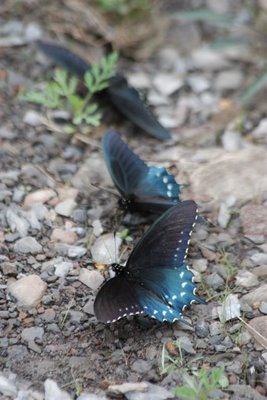
They're distinguished by that bewitching iridescent teal-blue hindwing. Beyond that, the iridescence suffuses the forewing and body. The pipevine swallowtail is one elegant bug.
So we're watching these butterflies puddling (imbibing phosphates and other essential minerals in mud), and this thing that looks like a flying crawfish shows up.
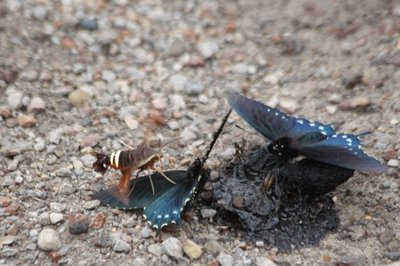 Eek! It's walking on the pipevine! What is it?
Eek! It's walking on the pipevine! What is it?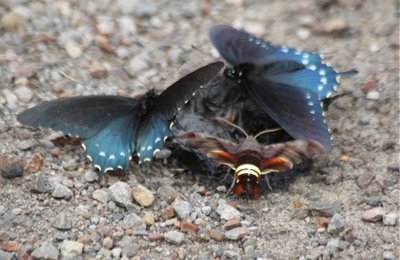 Ah. It's a Nessus Sphinx, a kind of hawkmoth, Amphion floridensis. Its brood plant (what the caterpillars eat) is Virginia creeper, grape, or porcelainberry. Lovely.
Ah. It's a Nessus Sphinx, a kind of hawkmoth, Amphion floridensis. Its brood plant (what the caterpillars eat) is Virginia creeper, grape, or porcelainberry. Lovely.And exceedingly weird. Here, its forewings are blurred and nearly invisible, enhancing the crawfish similarity.
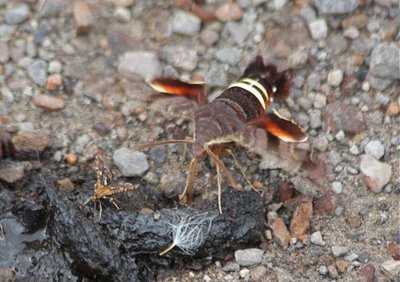
Not only that, but there's a little bitty microlep, another moth that looks like a miniature. See it just to the left of the giant sphinx? With a dandelion seed for scale? Teeny. Maybe somebody will know what it is, but I'm not holding my breath. All I know about it is: it likes skunkdoo.
On to more wholesome things. Here's Swamp Blue Violet, Viola cucullata. I like the common name of cuckoopint.
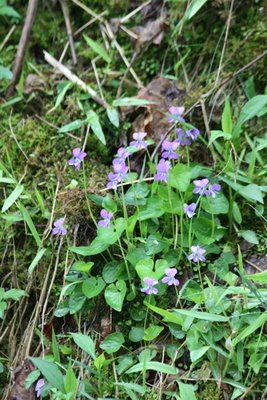
A Juvenal's duskywing, dark harbinger of spring. You can tell it from Horace's by the two pale dots on the upper rim of the hindwing.
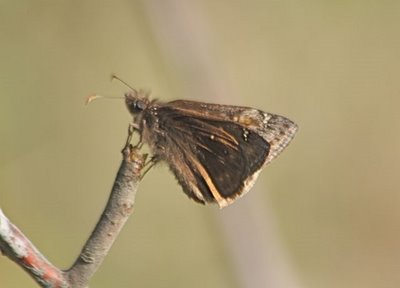 And for me, the prize of the day (other than spending part of it with Tim Ryan) was a lovely West Virginia White. How appropriate for this rarish little butterfly to show up, nectaring on foamflower, Tiarella cordifolia, at the end of our Muddlety trip.
And for me, the prize of the day (other than spending part of it with Tim Ryan) was a lovely West Virginia White. How appropriate for this rarish little butterfly to show up, nectaring on foamflower, Tiarella cordifolia, at the end of our Muddlety trip.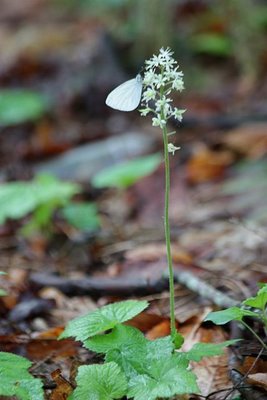
This lovely little thing is distinguished by its grayish shading on the veins of the underwing. It's a Pieris, like the cabbage white P. rapae, but it's P. virginiensis.
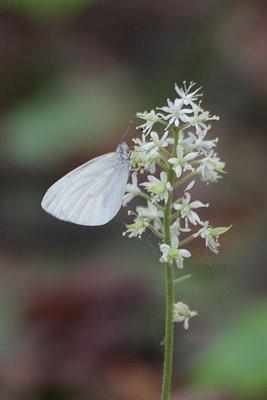 Ahhh. What a nice find.
Ahhh. What a nice find.Labels: butterflies on feces, cuckoopint, Fayetteville, foamflower, Juvenal's duskywing, Nessus Sphinx moth, New River Birding Festival, pipevine swallowtail, puddling, West Virginia, West Virginia White, WV





